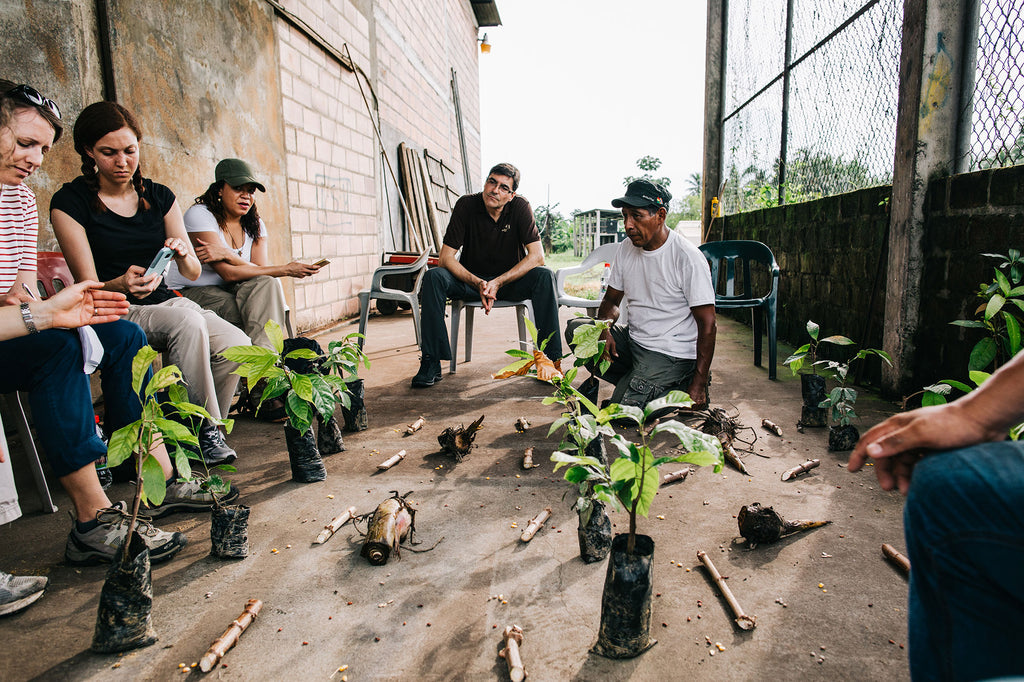About Us
We believe chocolate should help everyone thrive.
That's why our chocolate is more than sustainable.
It's regenerative.
On a recent trip to Ecuador, we teamed up with our chocolatiers and farmer partners to discuss the dynamics of sustainable cacao agroforestry. Conventional cacao tree cultivation focuses on monoculture, which often results in soil degradation and biodiversity loss. Instead, our co-ops practice dynamic agroforestry, a method of agriculture which strives to mimic the natural evolution of the forest and improve the overall well-being of the farms (fincas), cultivating a wide variety of crops. This practice is also known as agroforesteria dínamica or foresteria integral con cacao (FINCA).

Dynamic agroforestry supports a diverse system of plants, improves soil quality, reduces pests and diseases, and increases stable revenue for farmers by providing additional produce to sell and eat. This alternative method to conventional production consists of three natural levels; timber trees (upper level), local fruit trees such as mango, yucca, and banana (middle level), and nitrogen fixing trees (lower level). Throughout the plot, beans and maize are scattered freely, growing in harmony underneath the tree canopy, which provides ample shade for the plants.

In maintaining the life of the trees and creating a healthy ecosystem, regular pruning is essential. Leaving the clippings on the ground creates a natural layer of mulch which protects the soil from drying out. These clippings eventually decompose, increasing the humus (the organic part of soil formed by decomposing leaves and other plant material) and nitrogen in the soil, which are important nutrients for healthy crops. Due to the balanced system of dynamic agroforestry and natural enemies controlling pest populations, there is no need for pesticides. Additionally, dynamic agroforestry uses all available resources in the natural ecosystem. For example, in dry months banana stalks can provide water to growing cacao trees for up to three months, requiring no additional water source!

In the long term, cacao productivity is much higher through dynamic agroforestry and creates a healthier environment for both field and farmer. Recent studies have shown that this alternative method produces greater yields than conventional farms, in addition to providing shade, surplus food, and income for farmers. Win-win!
We believe chocolate should help everyone thrive.
That's why our chocolate is more than sustainable.
It's regenerative.